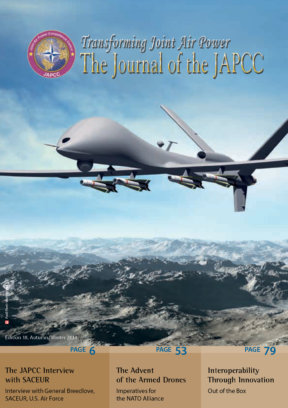Introduction
The increase of the terrorist activities since the last decade of 20th century around the world confirmed that future military conflicts will not be conventional like those in previous centuries. As a result, counter terrorism emerged as a problem area for many states.
At the same time, there have been differences on the meaning of ‘threat’. Threats have evolved and have become more unconventional, unpredictable and ubiquitous. Certain groups or non-state actors have formed terror networks outside of what used to be state-sponsored violence. Therefore, terrorism is the most challenging issue for defence forces due to its unpredictable nature.
Homeland Border Surveillance in Counter Terrorism
Surveillance gaps that emerge because of rough geographical conditions are an important issue. The geographical conditions of homeland border areas and potential instabilities in neighboring countries can adversely affect border security. Borders, with mountainous areas and harsh weather conditions force defence forces to take further precautions against enemy penetration.
Border surveillance must be continuous and uninterrupted. The aerostat is an aerial vehicle, which can adequately carry out this mission. Aerostats are suitable for surveillance because of their long endurance operating capability.
General Characteristics of Aerostats
Aerostats are unmanned and aerodynamically shaped balloons that remain stationary and fixed to the ground by a single, high-strength tether made of steel or fibre. Fibre tethers derive their strength through engineered fibres. The aerostat is made of a large fabric envelope that is filled with nonflammable helium gas, which provides the lifting force. The cables serve to supply electrical power and fibre optics to the aerostat systems and to conduct data relay between the aerostat and ground station.2 Some tethers can carry up to 100 KW of power for the largest aerostats.
An aerostat system is composed of three major packages: an aerostat platform, a variety of sensors and operational centres.3 It can climb up to approximately 20,000 feet Mean Sea Level (MSL).4 Its maximum detection range and coverage is approximately 200 to 300 Nautical Miles (NM). Its mission duration time can be several weeks. It is a large, stable platform that creates an ideal environment for electronic sensors. Its payload weight capacity can be up to 5500 lbs.5
SWOT Analysis of Aerostats
SWOT analysis is a method that stands for strengths, weaknesses, opportunities and threats. It is a way of summarising the current state of a system and helping to devise a plan for the future, one that employs the existing strengths, redresses existing weaknesses, exploits opportunities and defends against threats.6 The main issue in this study is SWOT analysis of aerostats so a SWOT analysis chart has been generated (see Table 1).
Strengths
Cost Effective. Cost effectiveness makes a huge difference between aerostats and other Unmanned Aerial Vehicles (UAVs).7 With a small portion of a UAV’s cost, an aerostat can be produced.8 It is not cost effective to use UAVs in surveillance missions for homeland border security. Aerostats can be used as an alternative platform for these missions.9 “Aerostats cost as little as $200 an hour to put up. This compares to tens of thousands of dollars per hour for a UAV and with a UAV, you still have a crew and an aircraft to maintain” said Lon Stroschein, Vice President at Raven Aerostar Company.10
Easy Installation. Installation of aerostats is relatively simple and takes only four hours to make ready for operation (for small sized aerostats).11 Tactical aerostats can be installed quickly and transportation is easy because of their lightness. Mid-sized and large aerostats can be ready for operations after a few hours more of installation. There are many types of mid-sized and large aerostats which can be transported by trucks, helicopters, or aircraft.12
Minimal Crew. Two staff can complete the installation of small-sized tactical aerostats. Mid-sized and large aerostats’ installation and operation readiness can be completed by five staff.13 The maintenance-operation of aerostats can be ensured by very few people, and their staff requirement is less than that of manned and UAVs’ requirements. Thus, an effective surveillance mission can be performed with fewer personnel and associated cost. Also the training time for staff is shorter because there are few lessons to learn.
Long Time and Persistent Performance. Aerostats, which may cover more territory than manned or UAVs, stay aloft for days or weeks when the manned or UAVs stay aloft for only hours.14 There is little debate that aerostats have better surveillance capability because of their long duration oversight capability.
One of the most important capabilities of aerostats is its uninterrupted and persistent data transfer. Thus, persistent surveillance without gaps can be accomplished and terrorist penetration of borders can be prevented.
Advanced Sensors and Surveillance Systems. Infrared (IR) and high resolution optical video cameras, more than one radar, high powered computers for processing data coming from sensors and communication equipment for data transportation to ground users are some of the equipment used with aerostats.15 In addition, persistent surveillance aerostats may cover very wide areas with their wide area movement image sensors that take more than one photograph per second. Surveillance of very wide areas helps users observing territories and increases awareness of potential targets.16
Wide Variety of Tasks / Missions Supported. Aerostats can be used effectively for many surveillance tasks. Within aerial early warning missions, aerostats take a leading role in assuring the sovereignty of crucial airspace dominance and providing early warning and airspace control. In terms of providing national security and aiding counter-terrorism, aerostats enhance security against terroristic acts, provide improved coverage of the airspace, support build up of a database over time for identification of irregular events and provide increased coordination between surveillance and response units.17
Aerostats can be used as a radio antenna relay with the radio antennas mounted on them. They can stay aloft with high antennas inexpensively and improve line-of-sight radio coverage over long distances, as well as, congested urban areas and mountainous terrain.18
As a result of this study, a comparison chart has been generated. It compares the general capabilities of UAVs with aerostats. Consequently, although UAVs are more effective than aerostats in certain categories such as altitude, mobility and survivability, it is evaluated that the aerostats can be used rather than UAVs in ISR missions because aerostats are more effective and advantageous in payload, cost effectiveness, training period, coverage, staff number and endurance categories. In short, the light blue areas the preferred capabilities and the grey areas are non-preferred (see Table 2 above).
Opportunities
Sensor Innovation and Integration. Integrating new technologies on aerostat systems is easy with universal payloading stations. Currently, many companies study and produce sensors that will enhance the effectiveness of aerostats.19 In the very near future, new sensor technology will be mounted on existing aerostats.
Composite Material Innovation. A company is currently manufacturing a new fabric called High Strength Laminated Aerostat Material (HSLAM) that will be used for the aerostat’s outer cover. They intend to reduce the weight of the material anywhere from 35 percent to 45 percent.20 The companies want to produce stronger and lighter composite materials used on the aerostat‘s outer frame. There are new developments every day about these materials and the competition between companies will make aerostats lighter and stronger in the future.
Weaknesses
Limited Useful Payload. The aerostat’s payload capacity increases in direct proportion to the volume of the aerostat. However, their ceiling altitude and endurance time decreases in direct proportion to the payload carrying capacity. Because the payload capacity of small sized aerostats is less than the payload capacity of larger volume aerostats, small sized aerostats will have to use smaller sensors and so their effectiveness of surveillance will be less than the larger ones.
Limited Altitude. The ceiling altitudes of aerostats are low and middle-level altitudes. Large-sized aerostats can climb to approximately 20,000 feet MSL altitudes. When calculating these altitudes Above Ground Level (AGL) they will be lower, especially in aerostats deployed in border areas with high altitudes above sea level. Aerostats cannot reach the required altitude in extremely hilly and mountainous territories, therefore they will be ineffective at surveillance and unable to perform the task as well as increase the possibility of staying within the range of light arms fire.
Threats
Poor Weather Conditions. In poor weather conditions, aerostats cannot perform missions effectively unless they are large. The most concerning issue is possible damage due to strong winds or heavy rain. In the event of excessive winds (faster than 60–70 mph for small sized aerostats) or other bad weather conditions, the data cables, fibre or steel cables that connect tethered aerostats to the ground may stretch and set the aerostat free.21 As a result, the aerostat will be lost and uncontrollable. In stormy weather, both the aerostats and the sensors may sustain damage, resulting in problems with data transfer and surveillance.
Limited Survivability. Large-sized aerostats can perform their missions out of the range of small arms fire because of their altitude, but smaller aerostats used at lower altitudes may stay within the range of small arms fire.22 Terrorist elements could easily disrupt or destroy small, low altitude aerostats.
Aerostats have been used in moderate and secure environments since 2003. They are suitable for using in an environment with relatively low threat level, but the aerostats would get damaged quickly by the adversary’s improved air defence systems when they are used in less benign environments where security has not been achieved fully.23 Ensuring the survivability of aerostats may be the most important problem in intense threat environments because aerostats are immobile systems and need protection.
Conclusion
In homeland border surveillance missions performed by manned or UAVs, there will be some constraints. Even if large numbers of aerial vehicles are used, some territories go unseen. As a result, the mission cannot be performed completely effectively and the costs will be high. When cost effective aerostats are used in similar missions, effectiveness increases. The endurance time of an aerostat is up to hundreds of hours, and aerostats may be used to cover farther distances with their advanced sensors, making aerostats a good alternative to manned or UAVs.
Aerostats have some weaknesses, such as limited survivability, mobility and climbing altitude. These properties make aerostats more disadvantageous than other manned or UAVs. On the other hand, aerostats have many opportunities in the near future to improve upon these negative aspects, such as, stronger composite material and sensor innovation. It is concluded that aerostats will be used frequently as primary platforms in surveillance missions within homeland security.












